Traditionalist Issues
 |
 |
 |
 |
 |
 |
 |
Dialogue Mass - CIX
The Truthfulness of the Minor Orders
What the reformers failed to appreciate is that the Person of Jesus Christ the Priest was the root from which the venerable tradition of the Orders grew, and that each successive grade of Orders brought the candidate for the priesthood more in conformity to their Divine model, less unworthy of exercising His Priesthood.
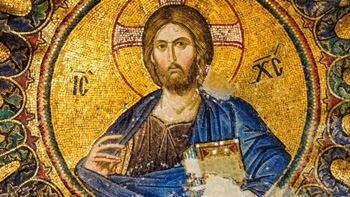 For this reason, the Minor Orders can never become anachronistic, no matter how social structures may change in different ages. Any attempt to make them conform to contemporary categories of thought is fundamentally misconceived and, therefore, harmful to the good of the Church, particularly the priesthood.
For this reason, the Minor Orders can never become anachronistic, no matter how social structures may change in different ages. Any attempt to make them conform to contemporary categories of thought is fundamentally misconceived and, therefore, harmful to the good of the Church, particularly the priesthood.
The real problem was that the progressivist reformers refused to acknowledge the order and wisdom of this step-by-step arrangement inspired by the Holy Ghost. Instead, they wished to bypass it by having a candidate bearing the character of a layman jump straight into the Diaconate, and to farm out the “redundant” clerical offices of the Minor Orders to the non-ordained.
It is self-evident that because the Minor Orders were consecrated by the immemorial tradition of the Church, they were productive of special graces for those ordained into them. No such assurance, however, can be claimed for the lay “ministries” which supplanted them in 1972 by papal fiat, and which had been devised in the committee room in order to replace clerical privilege by lay “entitlement.”
This has not only placed the Novus Ordo clergy out of kilter with their own traditions, but also deprived them of the special graces inherent in the Minor Orders – hence the need for a re-examination of the truthfulness of the Minor Orders that has been impugned by the reformers.
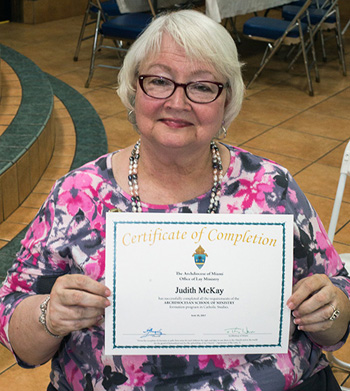 But where would they look for enlightenment on this issue? Certainly not to the documents of Vatican II which, according to Paul VI in Ministeria quaedam, had laid the foundations for the abolition of the Minor Orders; nor to the “new theology” on which that document was based, which changed the traditional understanding of the ordained priesthood.
But where would they look for enlightenment on this issue? Certainly not to the documents of Vatican II which, according to Paul VI in Ministeria quaedam, had laid the foundations for the abolition of the Minor Orders; nor to the “new theology” on which that document was based, which changed the traditional understanding of the ordained priesthood.
Unsurprisingly, there seems to be no one in the Vatican today capable of understanding that the Minor Orders are not, and never have been, a problem for the priesthood. So why have they been abolished and made the subject of controversy whenever traditionalist organizations faithfully continue the practice?
The difficulty, then, for anyone trying to explain the truthfulness of the Minor Orders is this: without a common starting point – an understanding of the priesthood according to Tradition – we cannot even begin to address their importance as a fitting preparation for priestly ministry. For any talk about the authority of Tradition – or the Catholic wisdom of the ages, or reverence for our spiritual patrimony and fidelity to its consecrated forms – is foreign to the ears of most Church leaders today. One might as well be speaking in ancient Hittite or Sumerian for all the likelihood of being understood.
If we wish to assess the truth of the Minor Orders, we need to understand first what was believed up to Vatican II and then compare it with the deliberations of the Consilium’s Committee on the Minors Orders, which met at Livorno in 1965. From what we have so far seen of the opinions of Fr. Lécuyer who wrote on the Committee’s behalf, the contrast could not have been more extreme.
The outcome of his 1970 article was that the Church’s traditional teaching on the Minor Orders was“untruthful,” and whatever had hitherto been taught on this subject by the Ordinary Magisterium must be abandoned if the life of the Church was to become renewed in modern times. The neo-modernist reformers and Pope Paul VI agreed.
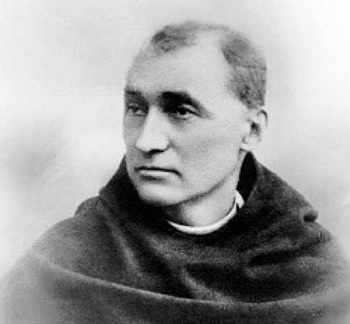
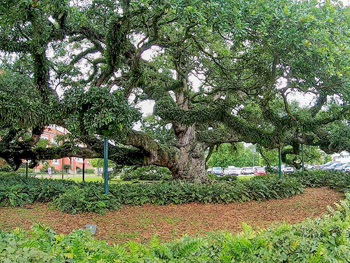 Before embarking on the task of explaining what the Minor Orders always meant in the Church, we need to recall the central issue – hotly contested by the reformers – that the Minor Orders and the Sub-Diaconate were, by their very nature, diverse subdivisions of the Diaconate. In fact, the connection between them was so intimate that Dom Adrien Gréa (1828-1917) likened them to branches of the same tree:
Before embarking on the task of explaining what the Minor Orders always meant in the Church, we need to recall the central issue – hotly contested by the reformers – that the Minor Orders and the Sub-Diaconate were, by their very nature, diverse subdivisions of the Diaconate. In fact, the connection between them was so intimate that Dom Adrien Gréa (1828-1917) likened them to branches of the same tree:
“As the tree of the Church grew, this main branch of the Diaconate, obeying the laws of a divine expansion, opened up and divided into several branches, which were the Sub-Diaconate order and the other minor orders.” (1)
From this metaphorical picture we can see how the inferior clerical Orders allowed the role of the Deacon to “branch out” so as to bear fruit throughout the Church down the ages. This expansion was accompanied by the outpouring of graces proper to each degree of the Minor Orders in proportion as they gave the recipients a share in the authority and powers exercised by Our Lord as Priest.
Although the various levels of participation are only small – hence the epithet “Minor” as distinct from “Major” Orders – they are nonetheless real in the sense that they make the recipients actually (not just figuratively, as with the laity) partake in the Church’s mission. In fact, the whole cycle of Minor Orders tend to the same end and contribute to the same result – the worship of God in a manner worthy of His sovereign majesty and the sanctification of souls for eternal life.
Who now mentions these supernatural ends in the reformed rites? They do not appear to be uppermost in the minds of the modern clergy. Nor do they feature prominently in the Novus Ordo liturgy which was created to fit a “horizontal” rather than a “vertical” dimension. Here we may pause to note that the suppression of the Minor Orders as a step-by-step preparation for the priesthood greatly enhanced the man-centred, this-worldly, “democratic” liturgies encouraged by Vatican II where the “active participation” of the people is to be “considered before all else.”
An assault on the hierarchical nature of the Church
Furthermore, the very word “Orders” by which these preparatory steps are designated shows that they belonged fairly and squarely in the domain of the Church’s Hierarchy, which placed their recipients on a higher level than the simple faithful. Thus, one cannot pretend that these Orders are simply exchangeable with lay “active participation,” or act as if the two sorts of activity – the one clerical, the other lay – stood on the same level with a shared identity.
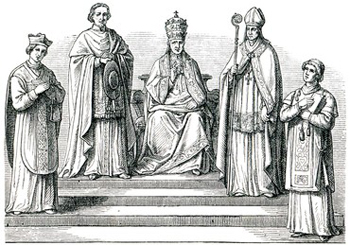 Yet this confusion of identity was introduced by Paul VI in Ministeria quaedam when he collapsed the Minor Orders into lay ministries, in accordance with the reformers’ wishes. Fr. Lécuyer summed up their arguments:
Yet this confusion of identity was introduced by Paul VI in Ministeria quaedam when he collapsed the Minor Orders into lay ministries, in accordance with the reformers’ wishes. Fr. Lécuyer summed up their arguments:
“[The Minor Orders] were in reality only a class-based system determined by the Church, conferring particular rights and duties: access to each individual class was through ordination. This was more suited to the rigidly hierarchical concept of ancient and medieval society rather than to modern society … Therefore, we are within our rights to question the propriety of keeping this system going in perpetuity … the Church has the power to abolish these Orders.” (2)
Their aim was to attack priestly privilege as “elitist,” impose a “communitarian” involvement of all not just in the liturgy, but in the whole life and mission of the Church. Whereas this mission was entrusted first to the Apostles and, through them, to her Hierarchy, Ministeria quaedam effectively set the stage for the “institution” (the very word used in the document) of laymen to replace the ordination of clerics. It was a revolutionary move that would have enormous consequences for the Church.
Loss of graces to the Church
The suppression of the Minor Orders also led to an incalculable loss of graces in the ranks of the Hierarchy. With each successive ordination, there were conferred not only the right and power to perform certain functions, but also the special graces peculiar to each grade. Thus, the aspiring priest could nurture his soul on the traditional spirituality of the Orders, and gradually understand the greatness of the role he was about to undertake.
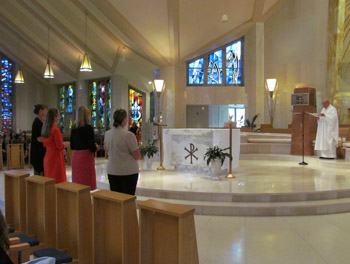 Nor can the “installation” of lay people into “ministries” compensate for this loss to the treasury of the Church’s graces. No matter how hard Church leaders pretend otherwise, the laity cannot be invested with the same rights and powers enjoyed by recipients of the Minor Orders. For Baptism only gives the laity the right to receive the Sacraments and the power to offer spiritual sacrifices in union with the Church.
Nor can the “installation” of lay people into “ministries” compensate for this loss to the treasury of the Church’s graces. No matter how hard Church leaders pretend otherwise, the laity cannot be invested with the same rights and powers enjoyed by recipients of the Minor Orders. For Baptism only gives the laity the right to receive the Sacraments and the power to offer spiritual sacrifices in union with the Church.
With Ministeria quaedam Pope Paul VI inflicted serious damage on the clerical state. By weaponizing “active participation” of the laity, he succeeded in officially disestablishing part of the Church’s Hierarchy. Nothing like it had ever happened in the Church before Vatican II. It was the Protestant Pseudo-Reformation that mounted the first serious challenge to the structure and hierarchical nature of the Church.
The response of the Church to this and any subsequent attacks was to preserve the integrity of the institution keeping her hierarchical structure intact – hence the concern of the Council of Trent to protect all ecclesiastical offices, including the Minor Orders.
Continued


Our Lord Jesus Christ, the Divine Model of priesthood
The real problem was that the progressivist reformers refused to acknowledge the order and wisdom of this step-by-step arrangement inspired by the Holy Ghost. Instead, they wished to bypass it by having a candidate bearing the character of a layman jump straight into the Diaconate, and to farm out the “redundant” clerical offices of the Minor Orders to the non-ordained.
It is self-evident that because the Minor Orders were consecrated by the immemorial tradition of the Church, they were productive of special graces for those ordained into them. No such assurance, however, can be claimed for the lay “ministries” which supplanted them in 1972 by papal fiat, and which had been devised in the committee room in order to replace clerical privilege by lay “entitlement.”
This has not only placed the Novus Ordo clergy out of kilter with their own traditions, but also deprived them of the special graces inherent in the Minor Orders – hence the need for a re-examination of the truthfulness of the Minor Orders that has been impugned by the reformers.

A new lay minister with her ‘certificate’
Unsurprisingly, there seems to be no one in the Vatican today capable of understanding that the Minor Orders are not, and never have been, a problem for the priesthood. So why have they been abolished and made the subject of controversy whenever traditionalist organizations faithfully continue the practice?
The difficulty, then, for anyone trying to explain the truthfulness of the Minor Orders is this: without a common starting point – an understanding of the priesthood according to Tradition – we cannot even begin to address their importance as a fitting preparation for priestly ministry. For any talk about the authority of Tradition – or the Catholic wisdom of the ages, or reverence for our spiritual patrimony and fidelity to its consecrated forms – is foreign to the ears of most Church leaders today. One might as well be speaking in ancient Hittite or Sumerian for all the likelihood of being understood.
If we wish to assess the truth of the Minor Orders, we need to understand first what was believed up to Vatican II and then compare it with the deliberations of the Consilium’s Committee on the Minors Orders, which met at Livorno in 1965. From what we have so far seen of the opinions of Fr. Lécuyer who wrote on the Committee’s behalf, the contrast could not have been more extreme.
The outcome of his 1970 article was that the Church’s traditional teaching on the Minor Orders was“untruthful,” and whatever had hitherto been taught on this subject by the Ordinary Magisterium must be abandoned if the life of the Church was to become renewed in modern times. The neo-modernist reformers and Pope Paul VI agreed.

Dom Grea: The Diaconate came into being naturally, like a branch on a grand tree

“As the tree of the Church grew, this main branch of the Diaconate, obeying the laws of a divine expansion, opened up and divided into several branches, which were the Sub-Diaconate order and the other minor orders.” (1)
From this metaphorical picture we can see how the inferior clerical Orders allowed the role of the Deacon to “branch out” so as to bear fruit throughout the Church down the ages. This expansion was accompanied by the outpouring of graces proper to each degree of the Minor Orders in proportion as they gave the recipients a share in the authority and powers exercised by Our Lord as Priest.
Although the various levels of participation are only small – hence the epithet “Minor” as distinct from “Major” Orders – they are nonetheless real in the sense that they make the recipients actually (not just figuratively, as with the laity) partake in the Church’s mission. In fact, the whole cycle of Minor Orders tend to the same end and contribute to the same result – the worship of God in a manner worthy of His sovereign majesty and the sanctification of souls for eternal life.
Who now mentions these supernatural ends in the reformed rites? They do not appear to be uppermost in the minds of the modern clergy. Nor do they feature prominently in the Novus Ordo liturgy which was created to fit a “horizontal” rather than a “vertical” dimension. Here we may pause to note that the suppression of the Minor Orders as a step-by-step preparation for the priesthood greatly enhanced the man-centred, this-worldly, “democratic” liturgies encouraged by Vatican II where the “active participation” of the people is to be “considered before all else.”
An assault on the hierarchical nature of the Church
Furthermore, the very word “Orders” by which these preparatory steps are designated shows that they belonged fairly and squarely in the domain of the Church’s Hierarchy, which placed their recipients on a higher level than the simple faithful. Thus, one cannot pretend that these Orders are simply exchangeable with lay “active participation,” or act as if the two sorts of activity – the one clerical, the other lay – stood on the same level with a shared identity.

An attack on the supposedly ‘elitist’ hierarchical structure
“[The Minor Orders] were in reality only a class-based system determined by the Church, conferring particular rights and duties: access to each individual class was through ordination. This was more suited to the rigidly hierarchical concept of ancient and medieval society rather than to modern society … Therefore, we are within our rights to question the propriety of keeping this system going in perpetuity … the Church has the power to abolish these Orders.” (2)
Their aim was to attack priestly privilege as “elitist,” impose a “communitarian” involvement of all not just in the liturgy, but in the whole life and mission of the Church. Whereas this mission was entrusted first to the Apostles and, through them, to her Hierarchy, Ministeria quaedam effectively set the stage for the “institution” (the very word used in the document) of laymen to replace the ordination of clerics. It was a revolutionary move that would have enormous consequences for the Church.
Loss of graces to the Church
The suppression of the Minor Orders also led to an incalculable loss of graces in the ranks of the Hierarchy. With each successive ordination, there were conferred not only the right and power to perform certain functions, but also the special graces peculiar to each grade. Thus, the aspiring priest could nurture his soul on the traditional spirituality of the Orders, and gradually understand the greatness of the role he was about to undertake.

Installing female Eucharistic ministers
in a modern Novus Ordo church
With Ministeria quaedam Pope Paul VI inflicted serious damage on the clerical state. By weaponizing “active participation” of the laity, he succeeded in officially disestablishing part of the Church’s Hierarchy. Nothing like it had ever happened in the Church before Vatican II. It was the Protestant Pseudo-Reformation that mounted the first serious challenge to the structure and hierarchical nature of the Church.
The response of the Church to this and any subsequent attacks was to preserve the integrity of the institution keeping her hierarchical structure intact – hence the concern of the Council of Trent to protect all ecclesiastical offices, including the Minor Orders.
Continued
- Adrien Gréa, De l’Église et de sa divine constitution, Brussels and Geneva: Société générale de librairie catholique, 1885, vol. 2, p. 36. Dom Adrien founded the Canons Regular of the Immaculate Conception in the Jura region of France with a view to restoring religious life after the French Revolution.
- Joseph Lécuyer, ‘Les ordres mineurs en question,’ La Maison-Dieu, vol. 102, 1970, pp. 101, 99.

Posted November 12, 2021
______________________
______________________
 Volume I |
 Volume II |
 Volume III |
 Volume IV |
 Volume V |
 Volume VI |
 Volume VII |
 Volume VIII |
 Volume IX |
 Volume X |
 Volume XI |
 Special Edition |


